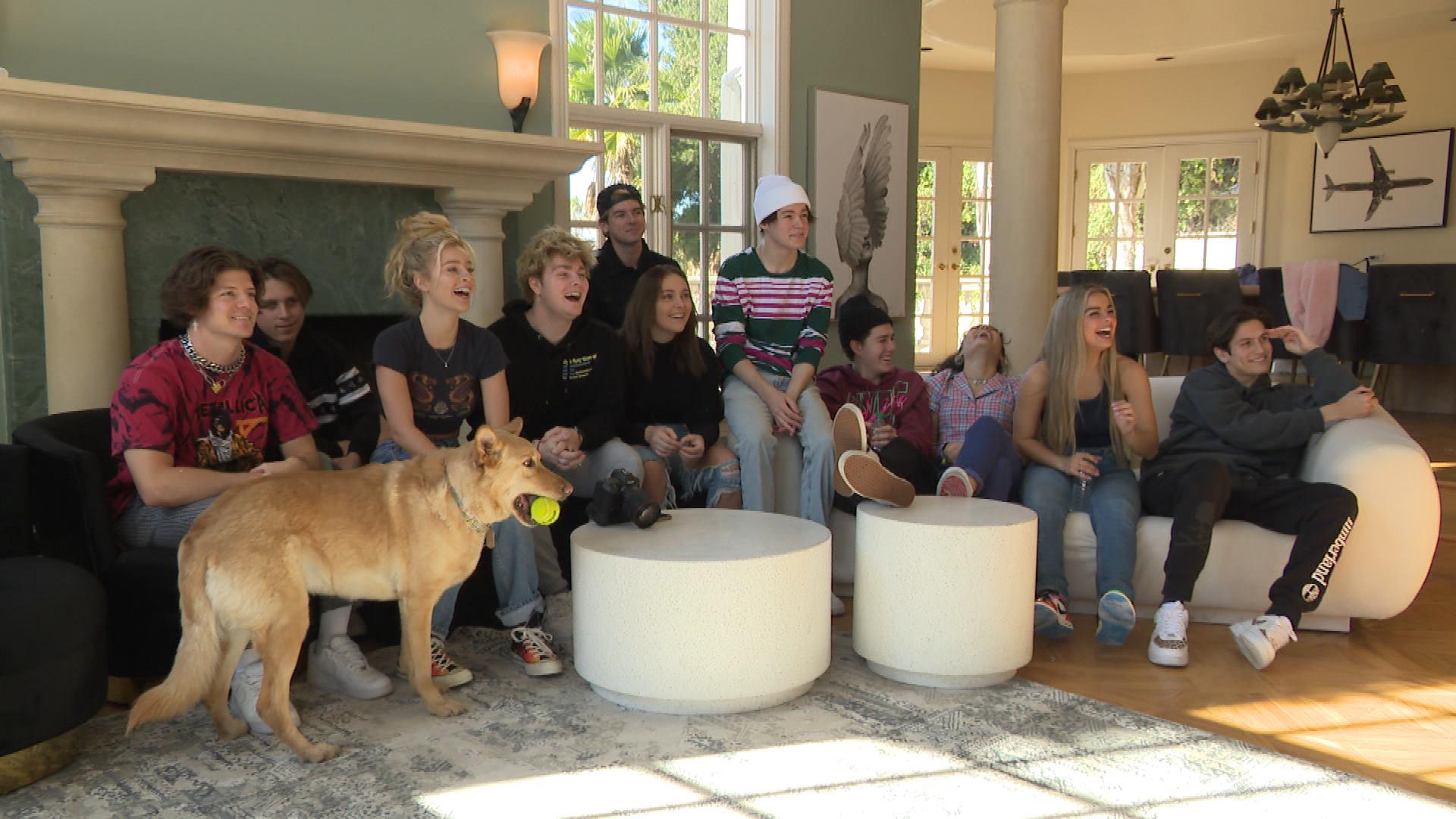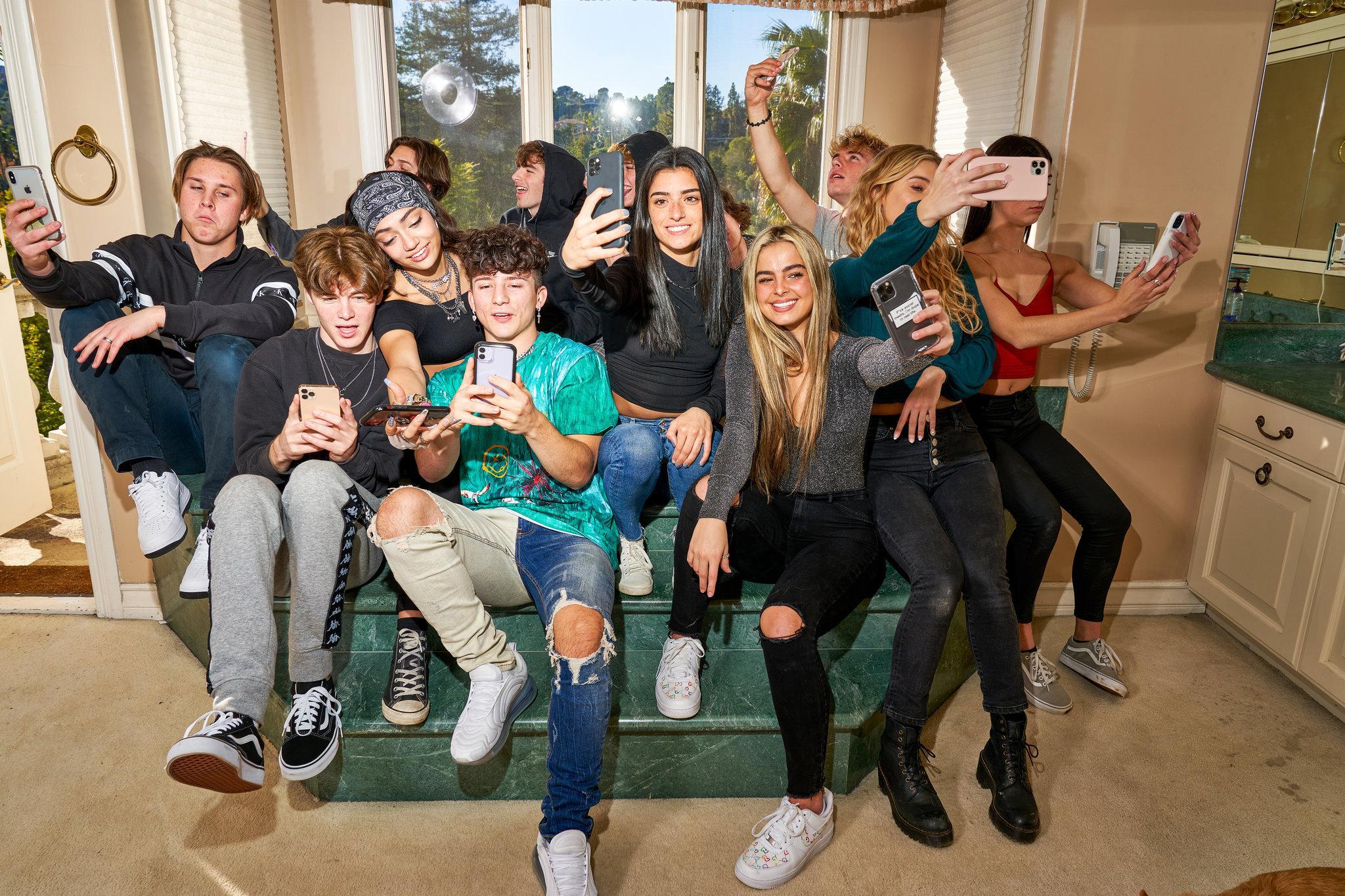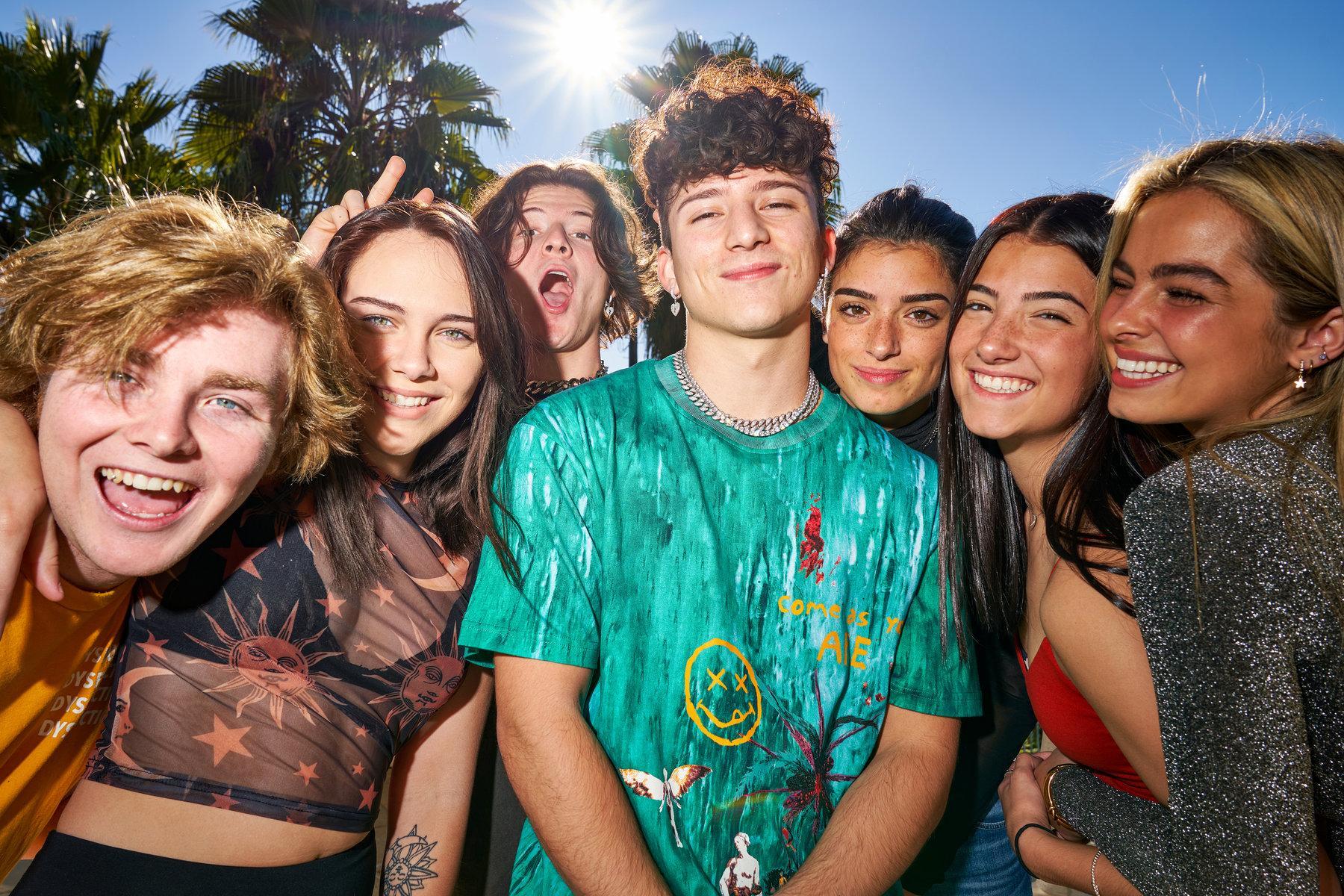Hype House: The Story Of TikTok's Original Creator Collective And Its Lasting Influence
Remember when a large house in Los Angeles became the center of a social media storm, a place where young creators lived and made videos together? That, in a nutshell, was the Hype House, a collective that truly shaped how many people viewed online fame and content creation. It was, in some respects, a very new kind of living and working arrangement for a group of internet personalities.
Back in late 2019, this particular house started drawing a lot of attention, primarily because it brought together some of TikTok's biggest names under one roof. The idea was simple enough: live together, collaborate constantly, and pump out a steady stream of engaging videos. It was a rather interesting experiment in collective creativity, a bit like a content factory, you know?
This article explores the rise and eventual changes of the Hype House, looking at its impact on the social media world, the challenges its members faced, and what it means for creators today. We'll also touch on some of the key figures who made the house famous, and what became of this unique project, actually. It’s a story that still holds lessons for anyone interested in the ups and downs of online popularity.
Table of Contents
- What Was the Hype House?
- The Minds Behind the Magic: Key Figures
- The Hype House's Impact on Social Media
- Challenges and Criticisms
- The Legacy of the Hype House
- Frequently Asked Questions About the Hype House
What Was the Hype House?
The Hype House was, essentially, a physical location where a group of popular TikTok creators lived, worked, and made content together. It started in December 2019, right as TikTok was becoming a huge force in social media. The main idea was to bring together creators with different styles and strengths, letting them collaborate on videos, share ideas, and help each other grow their audiences. It was a rather direct approach to building fame, you know?
This setup was a bit like a creative incubator, providing a constant flow of fresh faces and new concepts. The house itself became a central character in many of their videos, a backdrop for dances, skits, and daily life. For fans, it offered a glimpse into the lives of their favorite stars, making them feel a little more connected to the people they followed online, which, honestly, was a big draw. It seemed to promise a pretty good server experience, if you will, for content production.
The concept of a "creator house" wasn't entirely new, but the Hype House really brought it into the mainstream, especially for the short-form video platform. It showed how living together could boost collaboration and visibility, creating a kind of shared spotlight for everyone involved. This model, frankly, seemed like a very smart way to gain more attention in a crowded digital space.
The Minds Behind the Magic: Key Figures
The Hype House was founded by Chase Hudson (also known as Lil Huddy) and Thomas Petrou, with Alex Warren and Kouvr Annon also playing significant early roles. These individuals, along with others who joined later, became the public faces of the collective. They were, in a way, the active posters of this very popular forum, sharing their daily lives and creative output with millions. It was, arguably, a lot of pressure to be under constant public watch.
Here are some of the prominent people who were part of the Hype House at various times:
| Member Name | Known For | Role/Contribution |
|---|---|---|
| Chase Hudson (Lil Huddy) | Co-founder, TikTok dances, E-boy aesthetic | One of the main creative forces and a prominent member from the start. |
| Thomas Petrou | Co-founder, YouTube vlogger | Managed the house and its operations, often seen as the "dad" figure. |
| Charli D'Amelio | Most followed person on TikTok (at the time) | Early member, brought massive attention to the house. |
| Dixie D'Amelio | Singer, TikTok creator | Also an early member, contributed to the house's collective fame. |
| Addison Rae | Dancer, actress, singer | A very popular member who gained significant fame while in the house. |
| Kouvr Annon | TikTok creator | One of the original members, known for lifestyle content. |
| Alex Warren | Co-founder, TikTok creator, YouTuber | Known for comedic and relatable content, an original resident. |
| Nick Austin | TikTok creator | A prominent member known for his lip-sync and dance videos. |
Early Days and Formation
The idea for the Hype House came from a simple desire to create content more efficiently and effectively. Chase Hudson and Thomas Petrou saw the potential in bringing creators together, believing that shared space would lead to more ideas and better videos. It was, quite literally, about providing housing for a very specific kind of "work house" for social media. This approach, you know, seemed pretty clever for getting things done.
They leased a large mansion in Los Angeles, which quickly became the central hub. The initial group was a mix of established TikTok stars and rising talents, all eager to capitalize on the platform's rapid growth. The house itself, in a way, became a character, a place where the daily grind of content creation played out for millions to see. It was, apparently, a strategic move to boost their collective reach.
The early days were marked by a flurry of activity: constant filming, brainstorming sessions, and the general chaos that comes with a bunch of young people living together. They were, in a sense, trying to "grind out" success, putting in the hours to make sure their content stayed fresh and appealing. It was, frankly, a rather intense period of growth for everyone involved, pushing them to produce more and more.
Life Inside the House
Life in the Hype House was, by most accounts, a whirlwind of creative work and personal moments. Days were often spent filming multiple videos, collaborating on new dance routines, and coming up with fresh trends. It was a constant cycle of creation, where the lines between work and personal life often blurred. The house was, in a way, always "on," always ready for the next piece of content. This kind of environment, you know, could be both exciting and draining.
Beyond the content creation, there was the reality of communal living. Imagine a group of young adults, many of them teenagers, sharing a home while also dealing with immense public scrutiny. There were friendships, arguments, and all the usual ups and downs of living with others. Thomas Petrou, as a matter of fact, often took on a role of managing the household, trying to keep things organized amidst the chaos. It was, essentially, a very unique living arrangement.
The public's view of life inside the house was often filtered through highly produced videos and curated social media posts. What fans saw was the fun, the fame, and the apparent ease of their lives. The reality, however, often involved long hours, pressure to perform, and the constant need to generate new ideas. The "hype" made it more comfortable, perhaps, due to the collective energy and shared goals, but it was still a demanding lifestyle.
The Hype House's Impact on Social Media
The Hype House had a significant impact on the social media landscape, particularly on TikTok. It showed the power of collaboration and the effectiveness of a centralized content hub. Before the Hype House, many creators worked more independently. This collective model, however, demonstrated how joining forces could lead to much faster growth and broader reach for everyone involved. It was, quite literally, a game-changer for many aspiring creators.
Their collective fame helped to legitimize TikTok as a platform for serious content creators and a place where real careers could be built. Brands started paying more attention, seeing the massive reach these individuals had when working together. The house, in a way, became a symbol of TikTok's rising influence and the new opportunities it presented for young people. This really shifted how businesses looked at online personalities, you know?
The Hype House also sparked a trend of other creator houses forming, both on TikTok and other platforms. People saw their success and tried to replicate the model, hoping to achieve similar levels of popularity. It truly set a precedent for how online stars could organize themselves for maximum impact. This kind of shared living and working space became, in some respects, a template for digital fame.
Setting New Trends
One of the most notable impacts of the Hype House was its ability to consistently set new trends on TikTok. With so many creative minds under one roof, they were constantly brainstorming and trying out new dances, sounds, and video formats. If a Hype House member did something, it often went viral, inspiring millions of others to copy or adapt it. This ability to influence was, frankly, quite powerful.
Their videos often featured catchy songs and unique transitions, which quickly became staples across the platform. They had a knack for understanding what would resonate with a young audience, and their collective output meant they could saturate the platform with their content. This constant stream of fresh material kept them relevant and, you know, at the forefront of TikTok culture. It was almost like they had a direct line to what was cool.
The house became a kind of trend factory, where ideas were born, refined, and then unleashed upon the world. Other creators would watch what the Hype House was doing and quickly follow suit, hoping to catch some of that viral magic. This influence wasn't just about dances; it extended to fashion, slang, and even the types of challenges people engaged with online. They truly shaped the conversation, you see.
The Business of Influence
Beyond the fun videos, the Hype House was, at its core, a business venture. The collective fame of its members attracted significant attention from brands looking to reach a young, engaged audience. This meant opportunities for sponsored content, brand deals, and merchandise. The creators were, basically, turning their popularity into tangible income, a rather direct path to monetization. It was, pretty much, a new kind of career path.
The house provided a professional setting for these deals, making it easier for brands to work with multiple creators at once. This streamlined approach was appealing to companies, who could get wider exposure through a single point of contact. The members themselves, you know, were building personal brands that extended far beyond TikTok, venturing into music, acting, and other forms of media. It was a very strategic way to build a personal empire.
The success of the Hype House underscored the growing importance of influencer marketing. It showed that authentic, creator-led content could be incredibly effective in reaching consumers. The "prizes" weren't just likes and followers; they were real financial opportunities that transformed the lives of these young people. It was, honestly, a clear demonstration of the value in digital attention, a new kind of gold, perhaps.
Challenges and Criticisms
Despite its massive success, the Hype House faced its share of challenges and criticisms. Living and working in such close quarters, under constant public watch, created unique pressures. The very concept of living your life online, with millions watching your every move, can be incredibly taxing. It was, to be honest, a very intense situation for young people to be in, dealing with fame at such a rapid pace.
Internal conflicts were also a reality. When a group of strong personalities lives together, disagreements are bound to happen. These disputes, however, often played out publicly, adding another layer of stress. The pressure to constantly create, to stay relevant, and to maintain a certain image could lead to burnout. It was, quite literally, a relentless schedule, and not everyone could keep up.
The Hype House also drew criticism for various reasons, including allegations of drama, lack of diversity, and the perceived superficiality of their content. Some people felt that the focus was too much on fame and not enough on genuine creativity. It's almost as if some people just didn't want to create hype or start a debate, but the collective's actions often led to just that, you know?
Privacy and Public Scrutiny
One of the biggest challenges for Hype House members was the complete lack of privacy. Their home was also their workplace, and every aspect of their lives, from their relationships to their daily routines, was potentially content for their millions of followers. This constant exposure meant that personal moments could quickly become public spectacles. It was, frankly, a rather intense way to live, always on display.
The public scrutiny extended beyond their content. Every move, every comment, every relationship was dissected and debated online. This intense level of attention could be overwhelming, leading to anxiety and stress for the young creators. It was, in a way, like living in a fishbowl, where everyone could see in but you couldn't really see out. This kind of pressure, you know, is pretty hard to deal with at any age.
Rumors and speculation about their lives were rampant, often fueled by their own public personas. It became hard for them to distinguish between their online characters and their real selves. The house itself, while a hub of creativity, also served as a constant reminder of their public obligations. This lack of a clear boundary between private and public life was, arguably, a significant drawback of the Hype House model.
Burnout and Shifting Dynamics
The relentless pace of content creation and the constant pressure to stay relevant eventually took a toll on many Hype House members. Producing multiple videos a day, keeping up with trends, and managing their personal brands could lead to significant burnout. It's like trying to run a marathon every single day, without much rest. Some members, you know, felt unsure on which one of these they should focus harder on grinding out, leading to stress.
Over time, the dynamics within the house also shifted. As individual members grew in popularity, their personal brands often overshadowed the collective. Some members moved out to pursue solo careers or join other collectives. The initial shared vision began to fray as individual ambitions took precedence. This was, pretty much, a natural progression for many, as their own careers took off.
The constant cycle of new members joining and old members leaving also contributed to an unstable environment. The original magic of the collective began to fade as the core group changed. While the Hype House provided a launchpad for many, it wasn't designed for

Hype House Wallpapers - Top Free Hype House Backgrounds - WallpaperAccess

Hype House Wallpapers - Top Free Hype House Backgrounds - WallpaperAccess

Hype House Wallpapers - Top Free Hype House Backgrounds - WallpaperAccess